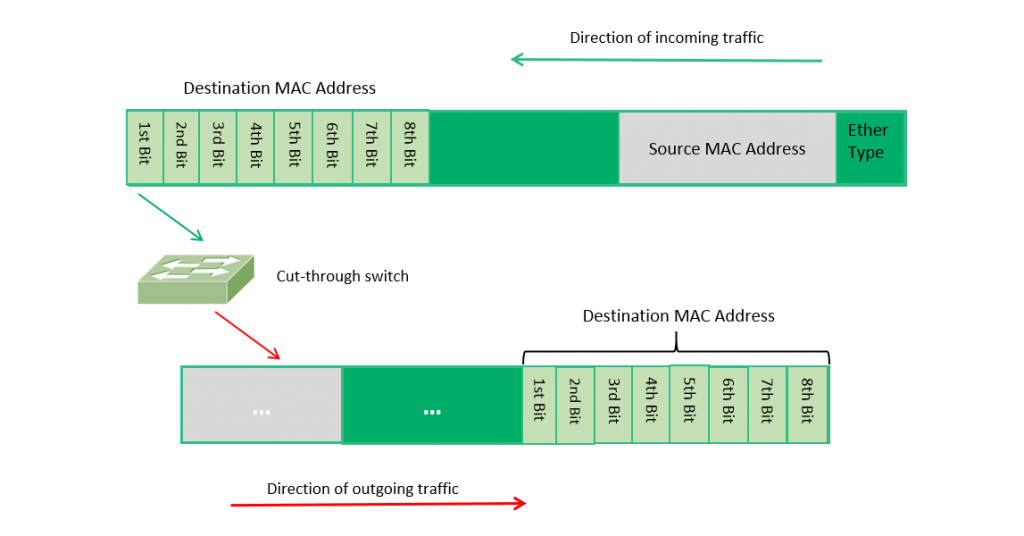A complete frame consists of several parts: a preamble, destination MAC address, source MAC address, users’ data and FCS. In different switching mode, different parts are recognized before forwarding.

Store-and-Forward Switching
As its name shows, store-and-forward switching will wait until the entire frame has arrived before forwarding it. Then the LAN switch will store each complete frame into switch memory buffers and check errors before making a forwarding decision. CRC (cyclic redundancy check) which uses a mathematical formula based on the number of bits (1s) in the frame to check the received frame. If no errors are present, the frame will be forwarded to the destination address. Otherwise the corrupted frame will be discarded. This process ensures high level of error-free network traffic, because the destination network will not be affected by the corrupted frames.

Cut-Through Switching
Compared with store-and-forward switching, cut-through switching is simpler. When switches receive the frame, it will look up its first 6 bytes of the frame that following the preamble. Then the LAN switch will check the destination MAC address in its switching table, and determine the outgoing interface port, and forwards the frame to its destination. No CRC error-checking in cut-through switching process. Therefore, frames with and without errors will be forwarded to the receiving switches. And error-check process needs to be carried out by the receiving device to ensure error-free transmission. To improve this situation, fragment free switching is applied to compensate for the drawbacks of cut-through switching, which will discard frames that smaller than 64 bytes in length and reduce late collisions in data transmission.

 HANSUN
HANSUN 